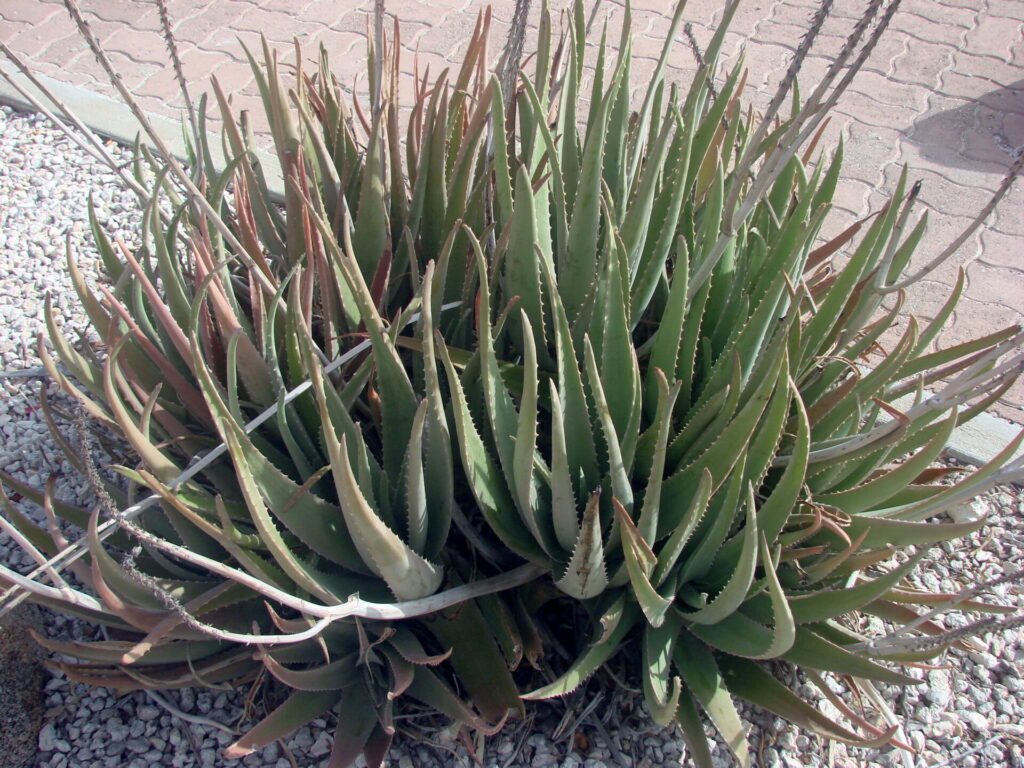is a species of succulent plant that thrives in dry, hot regions of the world. Aloe vera is a stemless or very hort-stemmed succulent plant that can grow as high as three feet tall. The leaves are thick and fleshy, reen to grey-green, with some varieties showing white flecks on the upper and lower stem surfaces. Yellow flowers may grow on outdoor aloe plants, but not on indoor potted aloe plants. Aloe plants are made up of 95 percent water, and even a slight frost will freeze them and turn them to mush.
Aloe barbadensis is the type of aloe generally used medicinally. There are over 450 species of Aloe, some of which appear to have similar properties but possibly less effective. Other aloes are poisonous. There are bitter aloes (like Aloe ferox) and very pointy aloes (Aloe acutissima). Aloe Vera is a hermaphrodite plant so it doesn’t require a male or female plant for its reproduction process. Both these organs are present in the plant.
Propagating new plants:
The young plants will do best if you wait until they are a little larger and mature enough to have a few roots of their own. While this size varies with subspecies and individual plants, a good rule of thumb is that the young plant should be at least 3 inches (7.5 cm) tall, and preferably 5 inches (12.5 cm). If the container has sufficient space, wait until the young plant is 1/5 the size of the adult and has several sets of “true leaves” that look like the adult’s. Sanitize your knife first to reduce the chance of infection. Clear away the dirt at the base of the pup to see whether it is attached to the mother plant. If it is, cut it away, making sure to keep the young plant attached to its roots if any are present. The presence of its own roots will increase the odds of success, but they may not be easy to find before you remove the pup.
Instead of planting the new aloe immediately, you may wish to allow the plant to form a callus over the knife cut. Placing the cut surface of the plant directly against soil increases the odds of infection. Place the young plant on top of well-draining soil, without burying the leaves.
Because the root system is likely to be small (or even nonexistent), you may need to prop up the plant with a layer of pebbles and lean it against another object. The root system should grow large enough to support the plant within a few weeks.
Mist once every few days if the plant has no roots. Before the roots have grown in, do not water the plant. Wait at least a couple weeks for a pup to grow its own roots before watering it.
Instead, mist the plant with a spray bottle once every three days. Aloe plants can last a long time without water, and if you water the plant before its roots are extensive enough, the water could pool and rot the plant If the pup already has its own root system, you may instead get the roots to set by giving it one watering and leaving it in the shade for 2 to 3 weeks.






